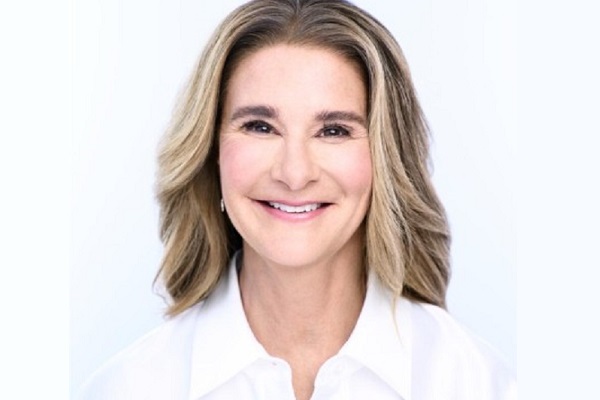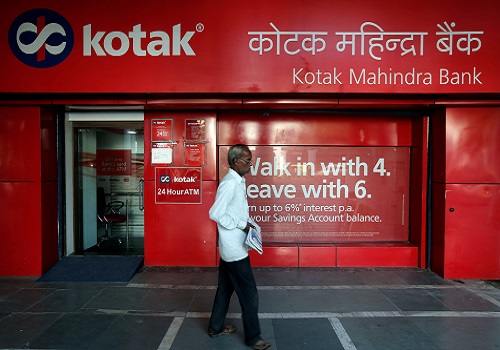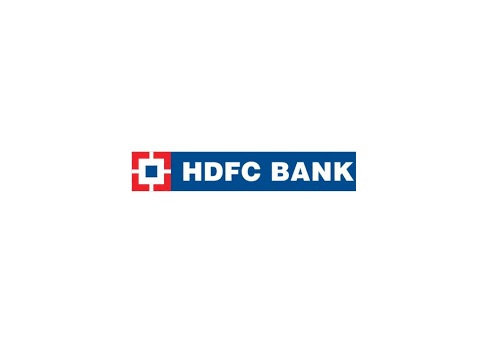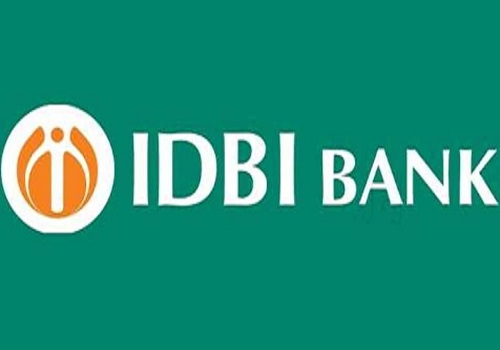Banking Sector Update : Scenario Analysis - Assessing earnings trajectory as rate cycle turns by Motilal Oswal Financial Services Ltd

Scenario Analysis: Assessing earnings trajectory as rate cycle turns
FY26E NIM may compress 10-21bp over our base-case; PAT impact at 4.4%-7.1%
* As attention focuses on the forthcoming Reserve Bank of India (RBI) policy/ies, in anticipation of a potential turn in the rate cycle, we delve into how a potential cut in repo rates could influence the earnings of banks.
* With the expectation of the first rate cut now being pushed to the Feb’25 policy meeting (due to weak GDP print and higher inflation that thwarts the central bank's decision-making), we anticipate that the full impact on margins will materialize in FY26 as the loan yields reprice downward.
* We note that while public sector banks (PSBs) have MCLR-heavy books (Indian Bank at 58% and Canara Bank at 48%), they are less vulnerable to rate cuts. In contrast, private banks with high repo-linked books (Kotak at 60% and Axis Bank at 57%) are likely to witness a greater impact on their lending yields.
* We further believe that ALM positioning will play an important role in assessing the NIM impact, as banks with shorter deposit maturities and longer-duration fixed-rate assets are better positioned in a declining interest rate environment.
* We attempt a sensitivity analysis for banks to gain a better understanding of the impacts on NII, PPoP, and PAT under various scenarios of rate cuts (50bp, 75bp, and 100bp). We estimate that NIM will further moderate by 10-21bp for FY26 over our base case. Under a scenario of a 75bp rate cut, we expect a 4.4%-7.1% dip in PAT, as we are currently factoring in a 30-40bp rate cut in our numbers. Top picks: ICICI, HDFCB, SBI, FB, and AUBANK.
Mix of repo-linked loans significantly higher for private banks
* Banks with a higher share of loans linked to the repo rate are more sensitive to the potential decline in the repo rate, as these loans will be repriced promptly following a rate cut. In contrast, lenders with a larger proportion of fixed-rate loans stand to benefit.
* Among banks, AU Bank has ~62% of its loan book linked to fixed rate, followed by SBI at 37%. In contrast, private banks exhibit the highest proportions of loans linked to the repo rate or EBLR with Kotak at 60%, Axis Bank at 57%, ICICI Bank at 52%, Federal Bank at 50%, and HDFC Bank at 43%.
* PSBs are increasingly exposed to MCLR-linked loans, with Indian Bank holding the highest share at 58%, followed by Canara Bank at 48%, and SBI and PNB at 36% and 34%, respectively. Banks with a larger proportion of MCLR-linked loans are likely to demonstrate more resilient performance, as their loan portfolios reprice more gradually, providing them with additional time to adapt to fluctuations in interest rates.
ALM positioning key: Banks with shorter tenure deposits and longer-term assets are better placed
Effective Asset Liability Management (ALM) is a key factor in evaluating how different banks are positioned to navigate through the varying interest rate environment. By strategically maneuvering the duration of loans and deposits, banks can optimize their balance sheets to protect their margins. We observe that banks with shorter-duration deposits stand to benefit in a declining rate environment, as they can reprice their liabilities more quickly. Conversely, banks with longer-duration advances will benefit, as they will continue to earn higher interest rates for an extended period. We have thus assessed the ALM profiles of key banks under our coverage and found that banks such as PNB, IIB, and CBK are better positioned in this regard (refer to Exhibit 4 for details).
Inflation surge to delay monetary easing to Feb’25
* Headline CPI inflation accelerated to a 14-month high of 6.2% in Oct’24, fueled by higher food inflation at 10.8% vs. 9.3% in Sep’24.
* Overall, inflation remains significantly higher than MOFSL estimates. During AprOct’24, inflation stood at 4.8% vs. 5.4% in Apr-Oct’23. We will monitor inflation in 3QFY25 and believe that there are clear upside risks to the RBI’s current projections.
* With rising inflation concerns, we comprehend that an imminent rate cut is unlikely. We thus expect the first rate cut to occur in Feb’25, even as GDP growth has considerably weakened.
GDP growth moderates sharply, making rate decision difficult
Real GDP grew at its slowest pace in seven quarters, recording an increase of 5.4% in 2QFY25 (vs. +6.7% in 1QFY25 and +8.1% in 2QFY24). This figure was significantly lower than the revised RBI projection of +6.7%. The deceleration in real GDP growth was primarily led by the lowest growth in gross fixed capital formation (GFCF) in six quarters, along with a sequential slowdown in private consumption. Further, the recent earnings data indicated a decline in corporate growth across multiple sectors, suggesting persistent weakness in the economic environment. This trend may prompt a recalibration of monetary policy. The RBI is likely to adopt a cautious stance due to the ongoing inflation pressures, deferring any rate cuts until Feb’25 to allow for a more comprehensive assessment of macroeconomic conditions while monitoring trends in GDP growth.
Systemic credit growth est. at 10.5% YoY; repo rate cut to offer modest boost
Systemic credit growth has significantly slowed to 11.1% as of 15th Nov '24, following two years of robust expansion. Banks are moderating credit growth to manage high CD ratios, with the slowdown exacerbated by asset quality issues in unsecured lending segments. As a result, we have revised our FY25 credit growth projection downward to 10.5% YoY from 12.5% YoY earlier. While rate cuts may stimulate some demand, external factors such as high CD ratios and stress in unsecured loans are likely to keep credit growth subdued over FY25E.
Correlation between repo rate and NIM high at 79%
NIM has demonstrated a strong 79% correlation with repo rate hikes from 1QFY22. Banks have benefited from these hikes, achieving peak NIMs around 4QFY23. However, subsequent increases in funding costs have led to moderation in spreads. For a few banks, NIMs have already returned to the pre-repo rate hike levels, including those of FB and DCB. The impending rate cuts, along with ongoing deposit repricing, will continue to exert pressure on margins over 1HFY26.
Sensitivity analysis: Evaluating NII, PPoP, and PAT trajectories under varying rate cut scenarios
The quantum and the pace of rate cuts by the RBI will depend on macroeconomic factors such as inflation and GDP data. We have conducted a sensitivity analysis for banks to better understand the impact on NII, PPoP, and PAT under various rate cut scenarios (50bp, 75bp, and 100bp). We estimate that NIM will further moderate by 10-21bp for FY26 over our base case, with a projected PAT decline of 4.4% to 7.1% under a 75bp rate cut scenario. This projection already incorporates a 30-40bp rate cut in our base case estimates. For the detailed earnings sensitivity under various repo rate cut scenarios please refer to Exhibit 1. We further note that while PSBs are better positioned than private banks due to their higher proportion of MCLRlinked loans – making them less sensitive to rate cuts in terms of margins – the PAT impact for both of them is broadly similar, as PSBs have a much higher dependency on margins for their earnings compared to private banks.
Valuation and View
* We closely monitor the potential turn in the interest rate cycle and the overall pace of monetary easing, as these factors will significantly impact the underlying margin trajectory. Additionally, progress in deposit mobilization will be critical, as an elevated CD ratio and rising inflation rates will make it challenging for lenders to reduce deposit rates and, consequently, lower their funding costs.
* Banks with a higher proportion of fixed-rate loans and a lower duration of liabilities are expected to report more resilient NIM performance over FY26. However, we remain cautious about the ongoing delinquency cycle in unsecured loans and the associated interest reversals, as high credit costs and an adverse asset mix will exert pressure on banks’ profitability.
* During 2QFY25, we have cut aggregate earnings for Private Banks by 1.1%/0.9% for FY25/26E respectively led by sharper cuts for mid-size banks (IIB, IDFCB, and RBK). We expect Private Bank earnings to grow at 16%/18% YoY over FY26/27E respectively, however we see downside risk to this growth in case of rate cuts.
* PSU Banks: Earnings momentum of PSU Banks remains strong leading us to raise our FY25 projections by 1.5%. However, with RoA profile nearly maturing, we estimate earnings growth to broadly track loan growth at 10-11% CAGR over FY25-27E. Headwinds on margins and potential rise in credit cost remains a key risk. Top picks: ICICI, HDFCB, SBI, FB, and AUBANK.
For More Motilal Oswal Securities Ltd Disclaimer http://www.motilaloswal.com/MOSLdisclaimer/disclaimer.html
SEBI Registration number is INH000000412

























